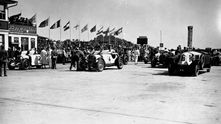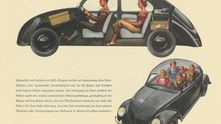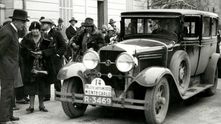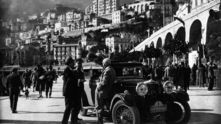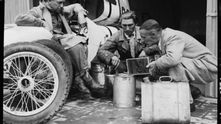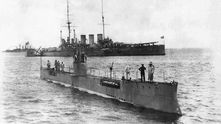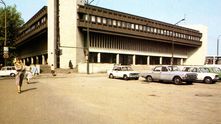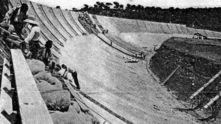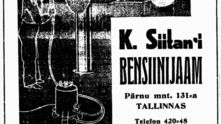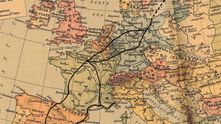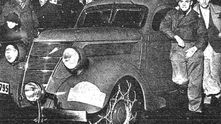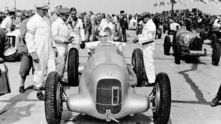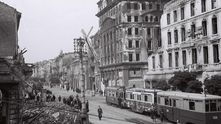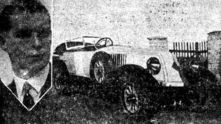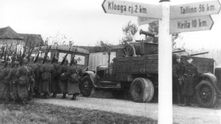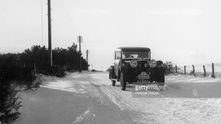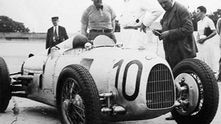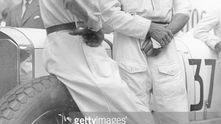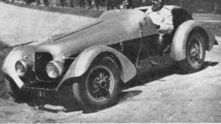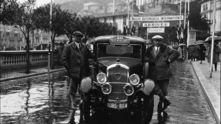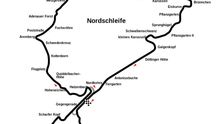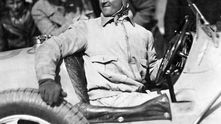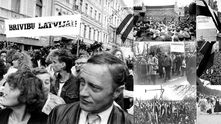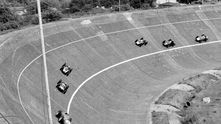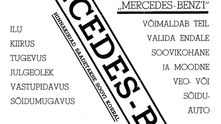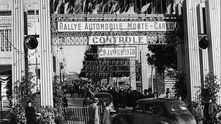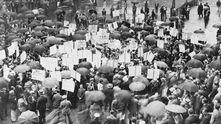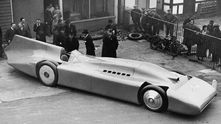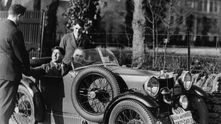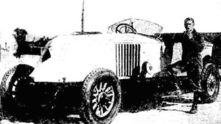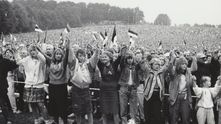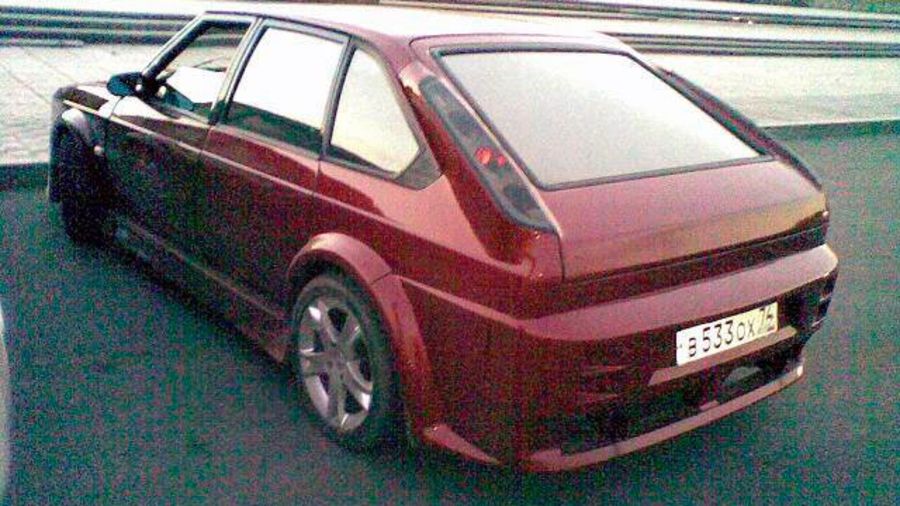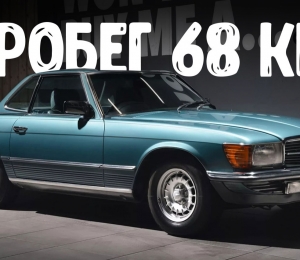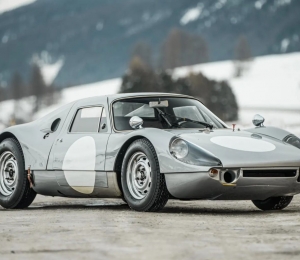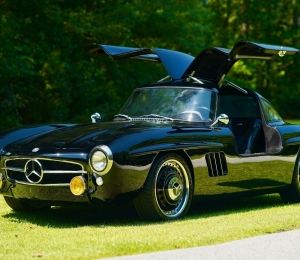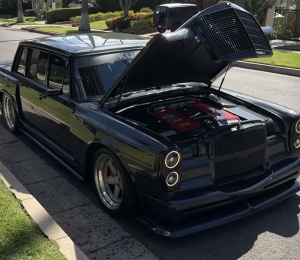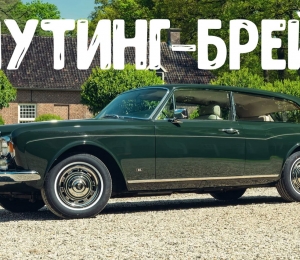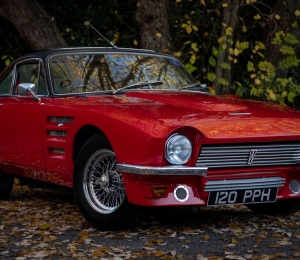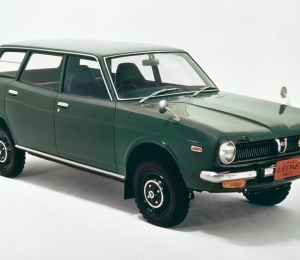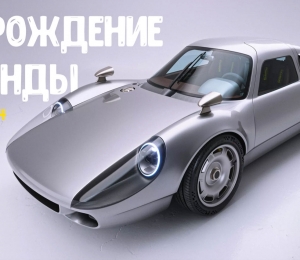First signs of human activity on Estonian ground date back to 9000 BC. Roman historian Tacitus mentioned the "Aestii" people in 98 AD. "Aestii" is similar to "Eesti" ("Estonia" in Estonian). Early Scandinavians called the land "Eistland". "Eistland" is also the current word in Icelandic for Estonia. In Danish, German, Dutch, Swedish and Norwegian Estonia is "Estland". Estonians were subjected to Danish, Teutonic (German), Swedish and Russian rules for centuries. With the Great Northern War (1700-1721) Russians took the land of Estonia from Sweden and Estonians stayed under the rule of Russia for 200 years.
In 1914 the World War broke out. In 1915 German Army took the Ruhnu island and in 1917 other Estonian islands. After the red Russians (communists) took power over the white Russians (capitalists) in Russia in October and the times were rambling, Estonians saw the possibility to get free from Russian power. In February 23, 1918 Estonians declared their independence and February 24, 1918 is considered the birthday of Republic of Estonia. Just 2 days later, German Army started the invasion to Estonian mainland from their bases on occupied Estonian islands and took the power in Estonia in less than 2 weeks.
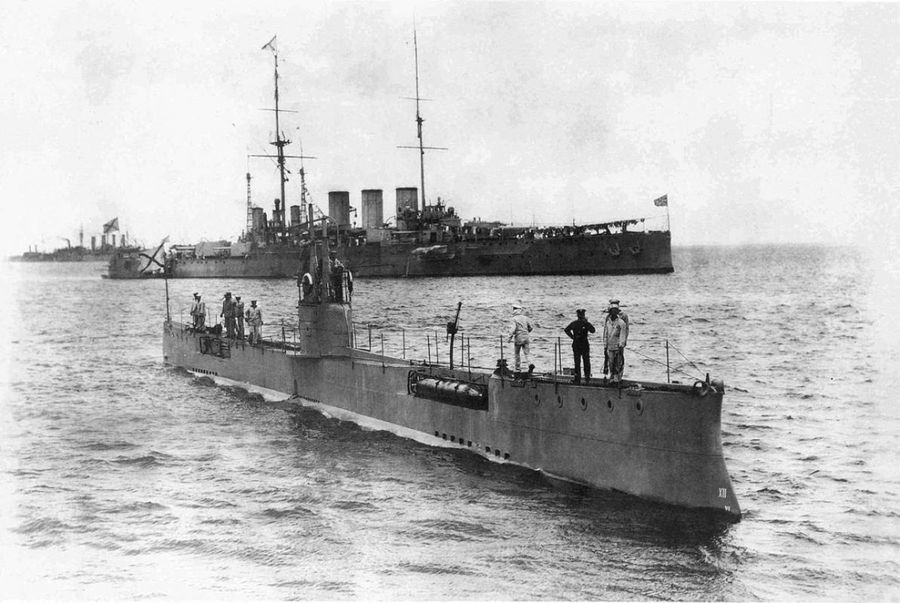
Together with the end of the World War I on November 11, 1918, ended the German occupation in Estonia. But no easy independence was meant for Estonians - on November 28 Red Army (red Russians) started war with Estonia to occupy it. Estonians defended their freedom with the help of white Russians, British Navy and volunteers from Finland, Sweden and Denmark. And Estonia won the Freedom War. On February 2, 1920 Soviet Russia signed the Tartu Peace Treaty recognizing Estonian independence in perpetuity. Unfortunately they could keep their hands off of Estonia only for 20 years. Meanwhile, in 1922, Stalin took power in Soviet Union.
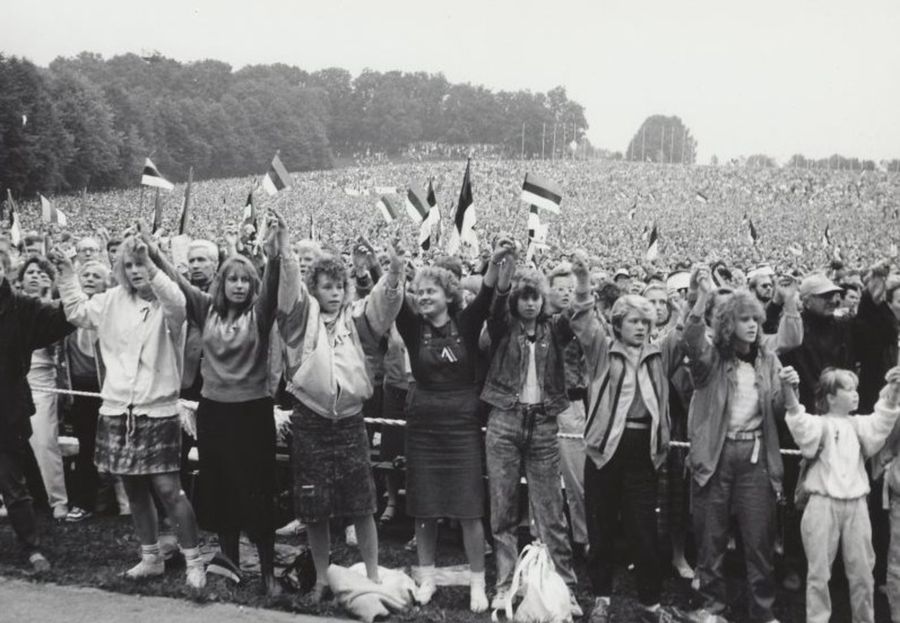
After the Freedom War Estonia was built up quickly and it was a successful European country. But communists from Russia had different plans for the land where Estonians lived in peace and happiness. Following the outbreak of the World War II in 1939, Soviet Union occupied Estonia in June 1940. Radios and typewriters were confiscated. In June 1941 Soviet Army deported over 10.000 Estonians from their homes. It included politicans, business families and cultural elite. Civilians were woken up in the night and put on trains which took them to Russia thousands kilometres away from home. Men were separated from their families and they never saw each-other again. 60% of these people were dead soon (half were shot and half died in Syberian winter). Only communists can carry out such crimes against humanity.
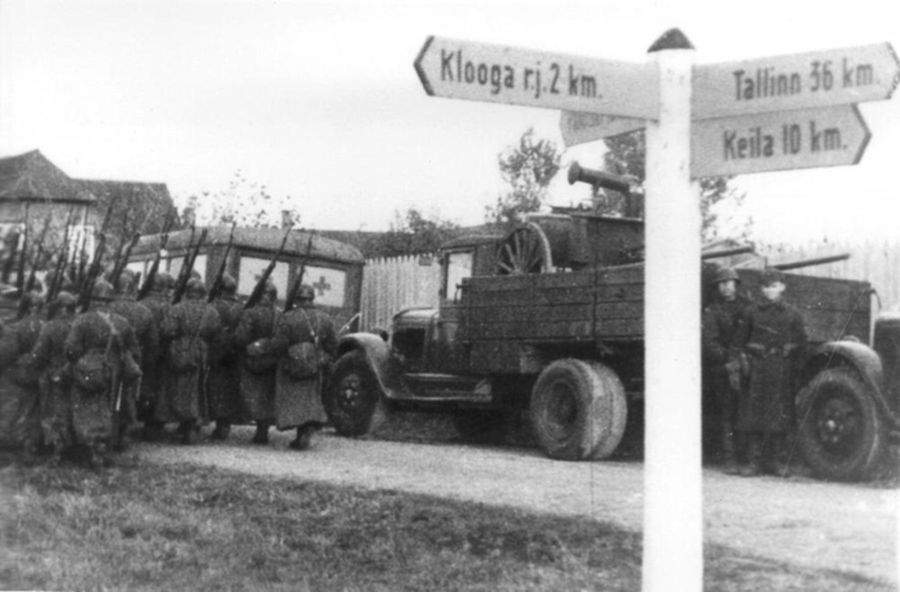
In July German Army entered Estonia and by December Estonia was free from communists. Although it was another occupation, after the communists it felt good. More because German Army granted civil power the freedom to re-establish the country's structures like they were before Soviet occupation. In September 1944 German Army decided to shorten the front line and army left Estonia. Very good, and very bad - the communist army moved in again. For next 50 years. In March 1949 deportation was repeated. 20.000 Estonians were taken from their homes to Syberia, the youngest just 3 days old and the oldest 95 years old. Stalin had third deportation plan also, but fortunately he died in 1953 before he could realize another crime against humanity (Stalin is counted for directly or indirectly killing 20.000.000 persons, so the amount of Estonians is even quite small).
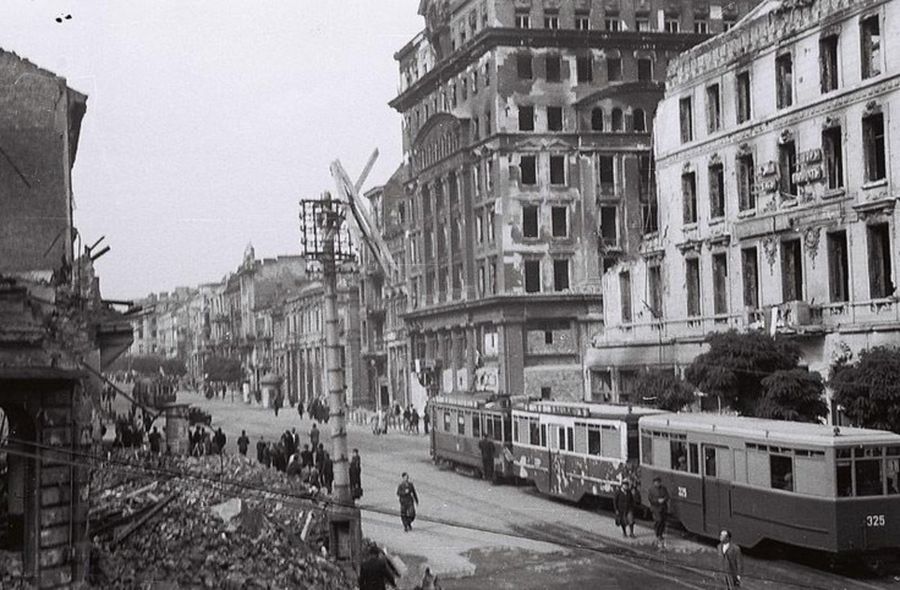
Russification and immigration of Russians started. In 1980 Estonian cultural elite prepared a "Public letter about Estonia" for soviet government. The letter was signed by 40 known Estonian persons. The letter was against russification; it pointed out that half of the Tallinn's citizens are already "imported in" and that Estonian language should have more power beside the forced Russian. In 1985 Mihhail Gorbatschev takes power in USSR. He is giving some freedom to the occupied nations... and they break out. Estonians raised their heads in 1988. Blue-black-white national flags were taken out after so many decades. Taking out Estonian national flag between 1944 and 1988 meant going to a jail. Gorbatchev wasn't so much for the national freedom, it just had happened.
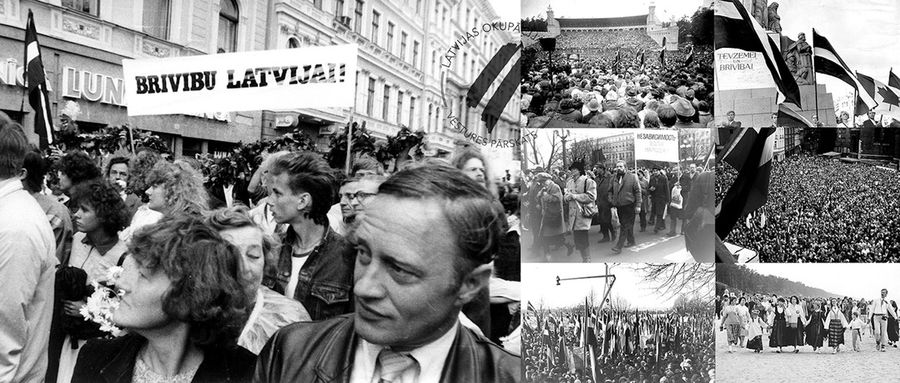
On August 18, 1991 communists want to take Gorbatchev down from his position. On August 20 communists tried to take the White House in Moscow and at the same time Estonians declared their independence again. In November the Soviet Union collapsed. The Soviet Army was now Russian Army and it still had its bases in Estonia. Iceland was the first country to recognize Republic of Estonia (Thank you, Island!). After 3 years, on August 31, 1994 the Russian Army finally left and the 50 year occupation had ended. Russia is still holding some minor parts of pre-WWII Estonia (currently behind the border of Estonia/EU). This shows that today's Russia doesn't condemn the crime made by the communist Soviet Union. They keep the parts of Estonia, which the communists took with guns. In 2004 Estonia became a member of EU and NATO. The "legacy" of the 50 years occupation are the hundred thousands of Russians living in Estonia. Until they respect Estonians and learn to speak Estonian language, it's OK.
Tallinn
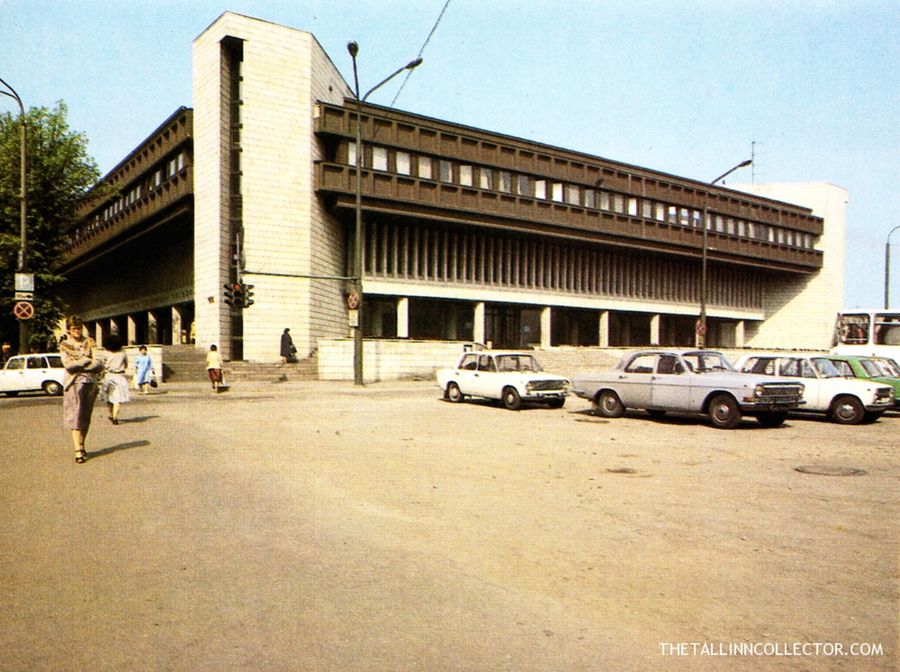
The signs of human activity on the grounds of current Freedom Square date back ca 3000 BC. In the Tallinn Old Town the remains from 8th century have been found. Tallinn was first marked on the map on 1154. Tallinn Old Town is the best extant medieval town in Europe. It still has the network of streets that were created between 11.-15. century. Tallinn joined Hanseatic League in 13th century. The City Hall was built on 1404 and it is still completely there. Raeapteek is a drug store in Old Town that has operated constantly since at least 1415. With 600 years in continuous existence, it is the oldest business in Estonia. The time between the beginning of 15th century and the middle of 16th century is considered the golden era of Tallinn. It was a very successful European town. To emphasize Tallinn's success, the world's tallest building was built in 1549 - a 159 metre Oleviste church. For comparison, the highest Giza pyramid was and is 147 m. In 1625 lightning took down the broach and a shorter top was built (total height is now 123 m). During the summer the roof is open for tourists to walk around the broach! Yes, really! And we suggest to visit it. Tallinn Old Town is the main tourist attraction in Estonia. It is also on the UNESCO World Heritage list.
Cars & Estonians
The first car, a Panhard-Levassor, was bought to Estonia in 1902. The "car age" had started. In 1912 a first rallye, a Tallinn-Märjamaa-Tallinn was held and the same year a rallye from St.Peterburg to Moscow passed Tallinn. 1924 saw the establishment of the Estonian Car Club (Eesti Autoklubi, EAK), which united car owmers who loved to drive fast. From now on, EAK was the organizer of all the car events. In 1925, the first 1 km race was organized. 1926 saw the first competition on the Tallinn Hippodrome and the first EAK rallye, with 205 km distance from Tallinn to Rakvere. In 1927International Car Clubs Union AIACR (Association Internationale des Automobile Clubs Reconnus) accepted the membership of EAK in Paris. It was a big thing for EAK. AIACR is today known as FIA. EAK established connections with car clubs from Latvia, Sweden, Germany, Finland, Switzerland, Denmark, Great Britain, England, Poland, Belgia, Bulgaria, Italy, Spain, Lithuania. Following the contacts, EAK member and rallye driver Eduard Klimberg takes his Renault to around the Europe trip. He loaded his car on the ship on March 17, 1928. As the sea was still in ice, it took the whole week for him to reach Stettin, where he unloaded the car and in 3 hours he was already in Berlin.
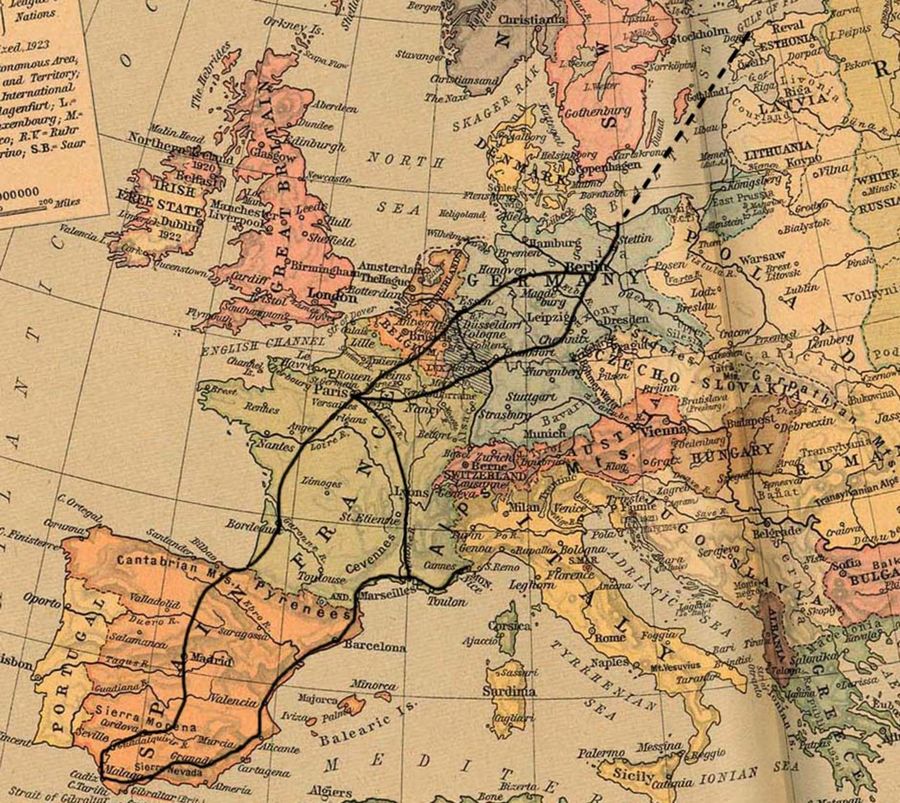
Klimberg's route went from Stettin through Berlin, Dessau, Mainz, Verdun, Paris, Lyon, Nice, Nimes, Carcassonne, Barcelona, Tarragona, Valencia, Murcia, Granada, Malaga, Cadiz, Sevilla, Cordoba, Todelo, Madrid, San Sebastian, Bordeaux, Tours, Paris, Berlin and back home.
In some locations Klimberg stayed many days, the longest in Nice for 8 days. The trip lasted for 2 months and 9000 kilometres. Considering the roads of these days, it was a challenge for the driver and for the machine. In total the car used 1965 litres of gasoline (22L/100km) and 60 litres of oil (1L/150km).
During Klimberg's Euro-tour, EAK had started publishing "Auto" magazine in March and organized the first car show in Estonia in April. In September Klimberg took part in a 1 km race organized by Latvian Car Club. It had standing start and flying start competitions. Klimberg got first result in flying start (24.5 sec., 148 km/h).
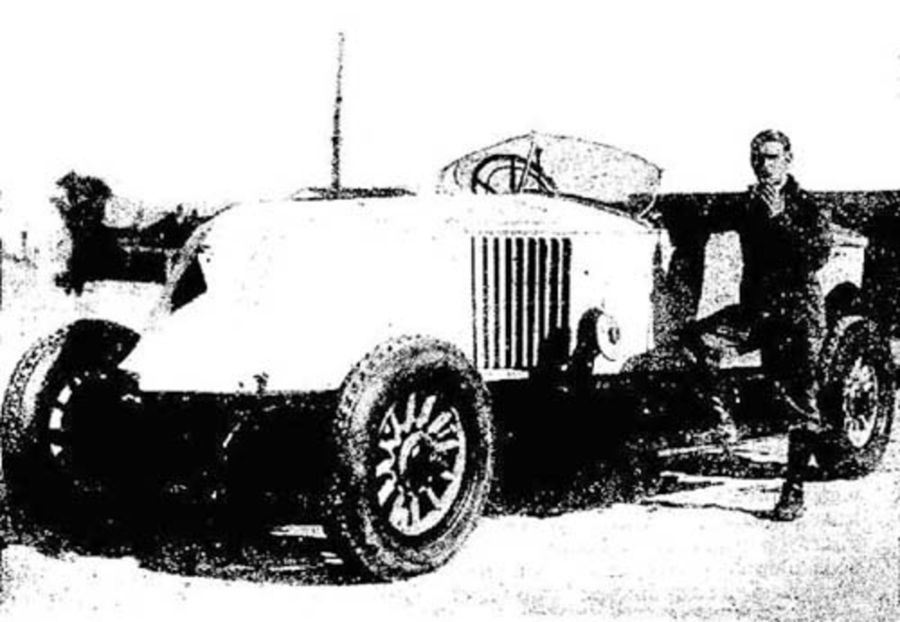
Klimberg at the standing start. The name of the car - Renault 40 CV Torpedo Sport - suggests it had 40 hp's, but the car really had at least 140 hp's from its 9.1 liter 6-cylinder engine. Klimberg's Renault was the fastest car in Estonia.
As can be seen from the photo, the car has been stripped down for lighter weight - removed are the headlamps, wheel arches front and rear and spare wheels from both sides. This was the configuration for the 1 km race as on every other occasion everybody carried 2 spare tyres and sometimes it wasn't enough as the roads were bad and the tyres didn't last very well.
1929 Rallye Automobile de Monte Carlo saw the first Estonian to join the game. The event was as much the rallye TO Monte Carlo, as much the rallye OF Monte Carlo. According to the regulations, the participant could choose the starting point from about 60 cities in Europe. In reality the participants registered to start from 26 locations. The closest start to Estonia was in Riga, Latvia, which also was the favorite among the drivers - 21 of 93 cars were registered to start from Riga.
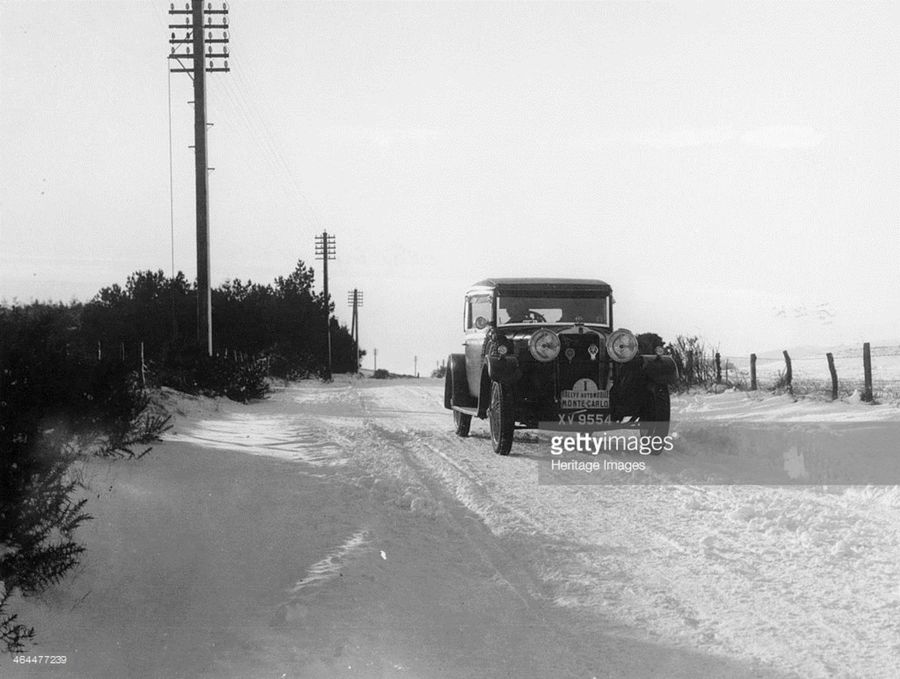
The winter tyres were not invented yet (some used chains) and the countryside roads were not cleaned of snow, so all the participating cars were stuck. All cars followed the first car, which could move only when the snow was removed in front of it by busy hands.
Due to too much snow, only 14 cars started on January 20 from Riga and no single car of them reached the finish - not the Estonian Julius Johanson (Buick 4180cc), nor Germany's pride and joy, Rudolf Caracciola (Wanderer 2450cc plus team with 2 service cars). The compulsory average speed was given for the trip from start to Monte Carlo and there were other ways of earning points. The finish was open on January 23, betweel 10 and 16 o'clock. 24 cars arrived in that time frame. The next day saw the 320 km race on Col de Braus road and on January 25 was the event of choosing the most comfortable car. The day after that was the last event, which was a Mont des Mules 3 km hillclimb competition.
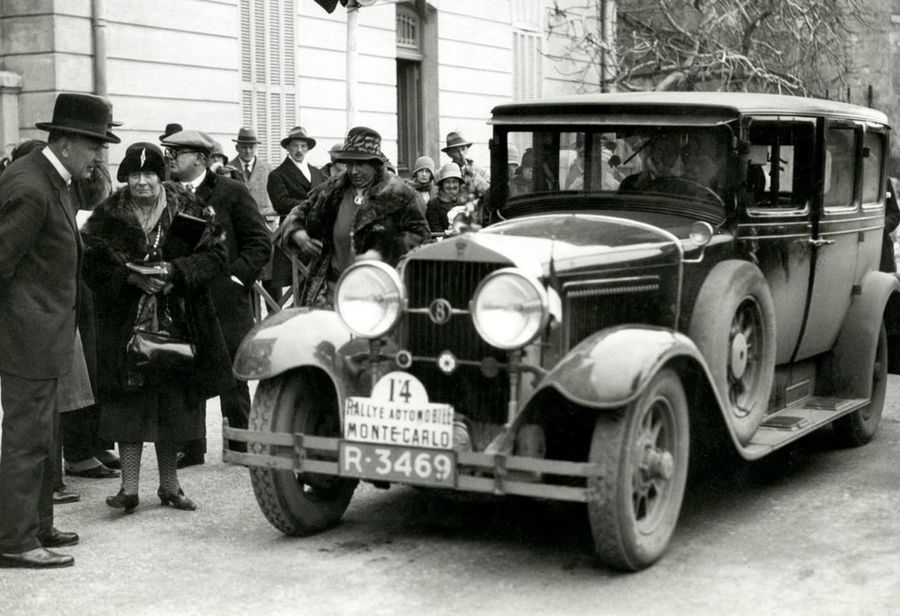
The same year there was another big step for Estonian motoring - we entered the 1929 German GP on Nürburgring (called Nürburg-Ring at that time). Event: IV Großer Preis von Deutschland 14.07.1929. Track: Nürburg-Ring (Nordschleife + Südschleife), 28.265 km. Distance: 18 laps, 508.77 km
German Car Club AvD (Automobilclub von Deutschland) sent the invitation to Estonian Car Club. Eduard Klimberg didn't plan to make this many-thousand-kilometre trip to the competition, but finally (and fortunately!) he decied that he must see the greatest racing drivers of the world. So he put his Renault 40 CV Torpedo Sport on the ship and the voyage took him to Stettin again. Klimberg drove the car through Berlin and to Nürburg. In Nürburg, the car, driver and co-pilot were weighed and 120 kg ballast was added to the already heavy car (we think it weighed at least 2 tons). Then the car was "confiscated" until the start as mr.Klimberg wrote in 1929. Parc Ferme in today's terms.
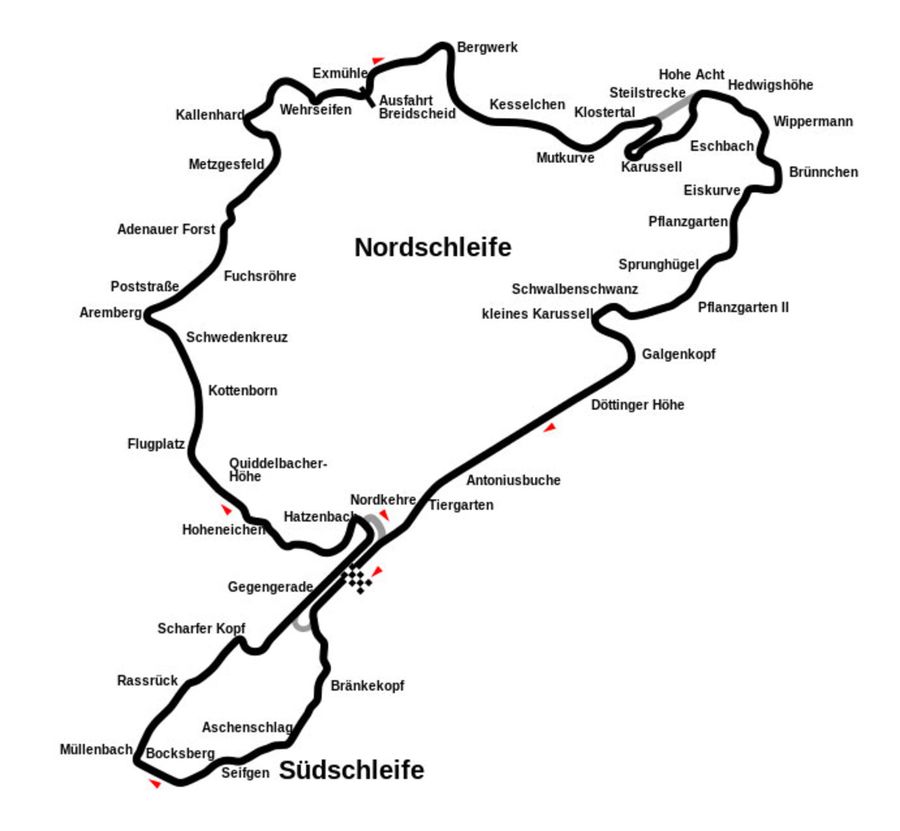
The track had been opened just 2 years before, on July 18, 1927 and was then considered the most interesting race track in the world, even compared to Targa Florio (to explain Targa Florio had many different lengths - 1906-1911 149 km, 1912-1914 965 km, 1919-1930 108 km, 1931 149 km, 1932-1936 72 km, 1937-1940 just 6 km, 1948-1950 1080 km, 1951-1977 72 km. The shorter the "track" was the more rounds the race was).
Klimberg competed in the class for most powerful cars - Class 1. The other cars in Class 1 were 4 Mercedes-Benz SSK's with the last year winner Rudolf Caracciola in one of them. SSK was engineered by Ferdinand Porsche. It had 7-litre supercharged engine with more than 200 horsepower. SSK's were the fastest cars in the world.
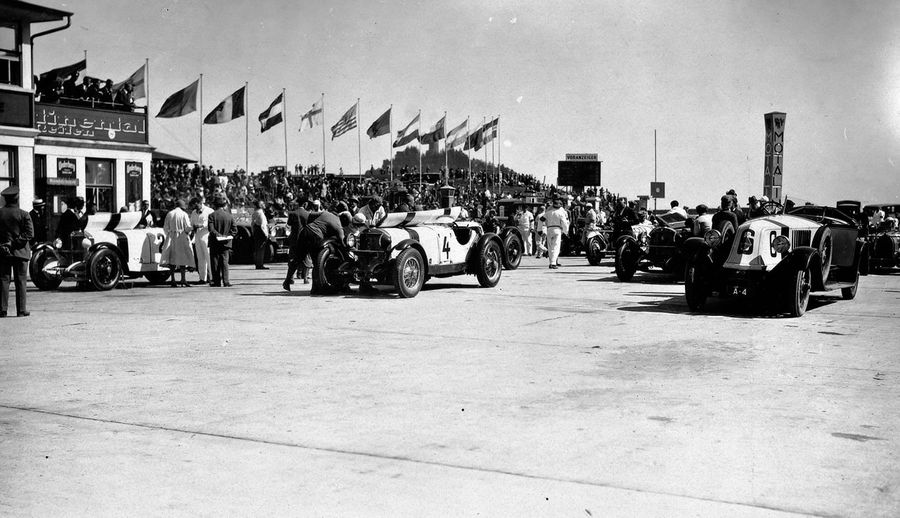
No.2 - Caracciola, No.10 Momberger, No.6 Klimberg (most right)
The total number of registered participants was 44 - 18 Germans, 8 Italians, 6 Frenchmen, 6 Czechs, 2 Englismen, 2 Belgians, a Swiss and and Estonian. There were 21 French cars, 10 German, 6 Italian, 4 Czech, 2 British and 1 Belgian car. The number of spectators was a whopping 200.000! It is the same with Nürburgring 24H now 80 years later.
On Sunday, July 14, 1929 at 10 o'clock, 33 cars from 8 countries started in German GP at Nürburg-Ring. Among the other national flags, Estonian tricolore blue-black-white was rised in the honour of Estonian participant Eduard Klimberg. After the start Rudolf Caracciola took the lead. Unfortunately Caracciola's supercharged engine exploded on 3rd lap. Klimberg retired on 12th lap due to the worn out tyres. He had brought along 8 tyres, but it wasn't enough. After the almost 5 hour race, the competition was won by Louis Chiron from Monaco who entered the competiion in Class 2 with a Bugatti Type 35C. It had a 2-litre supercharged engine producing over 120 hp's. With this race Chiron beat the Caracciola's result from previous year.
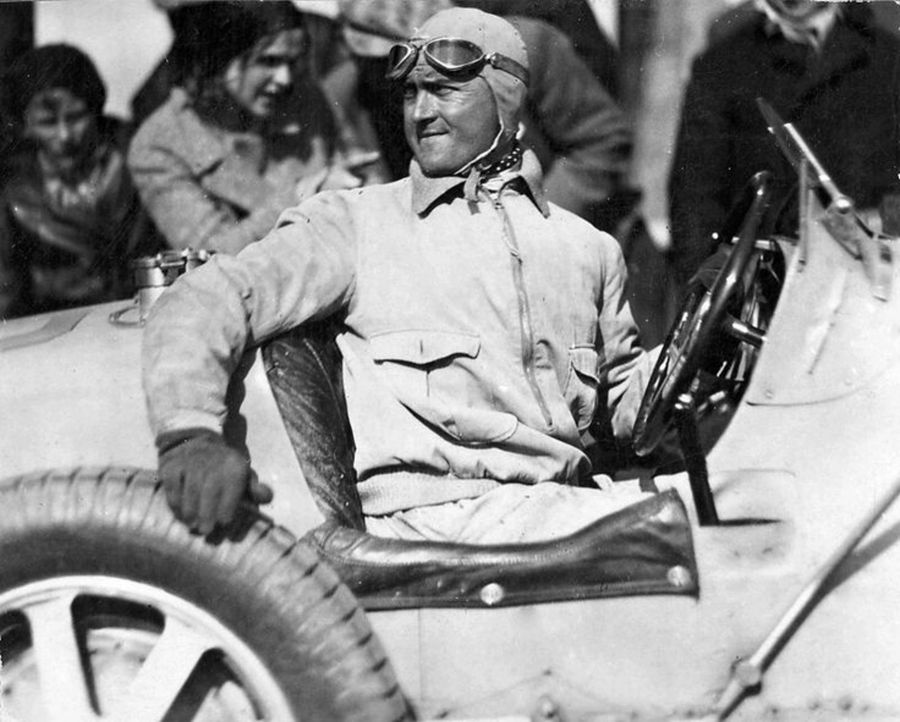
Louis Chiron & Bugatti
After the race Klimberg had the chance to shortly talk with the winner. Klimberg was changing tyres when Chiron entered the strorage area. Chiron said he had no expectations he could win the race. In the short conversation Chiron asked a couple of things about Estonia and Klimberg gave him Estonian Car Club plaque. The fact that Louis Chiron did the fastest lap (15:06.0 @ 112.3 km/h) prooves that not only the bad luck of SSK's wasn't the reason for his victory. The Type 35C weighs around 750 kg compared to SSK's ca 1700 kg. Chiron was later to become a famous racing driver. He was later also known for being the oldest driver who had ever taken part in F1. In his last F1 race, the 1958 Monaco GP, he was 58 years old. In 1999, a Bugatti prototype was named after him - a Bugatti 18/3 Chiron, which was the predecessor to the Bugatti Veyron.
1930 Monte Carlo rallye had first time its start also from Tallinn, Estonia. 142 cars from 10 countries were registered to participate, but 115 really started with 21 cars from Tallinn. There were 29 registered to start from Tallinn, but 8 cars must have retired already before arriving to Tallinn. For the racers starting from Tallinn, it was a 3472 km race through Riga, Königsberg (after WWII Kaliningrad, Russia), Berlin, Paris and Lyon.
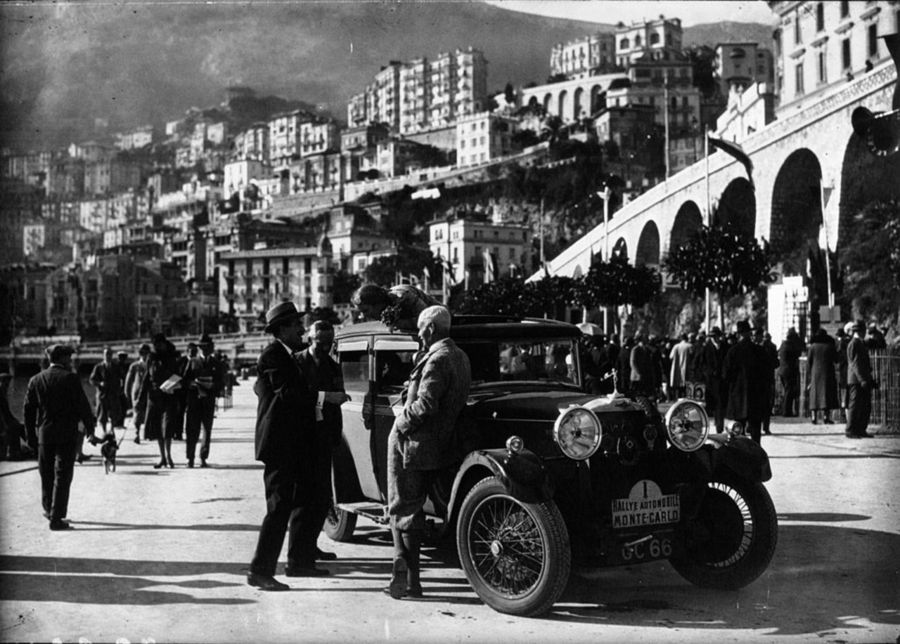
Famous German race drivers Hans Stuck (Steyr 2070cc) and Rudolf Caracciola (Mercedes-Benz Nürburg 4600cc) were among the starters in Tallinn. Estonia was represented by A. Zimmermann / Julius Johanson (Auburn 4700cc).

Stuck and Caracciola
Estonians faced engine problems in Cologne and reached the finish too late, which meant they were not among those 88 who reached it in time. Caracciola got 15th and Stuck 23rd place.
1931 Monte Carlo rallye's most popular starting point was Stavanger in Norway (45 cars). Louis Chiron with Bugatti (of course!) started also from Stavanger. Only 9 cars were registered to start from Tallinn, but due to the inactivity of Latvian government, the roads in Latvia 65 km before Estonian border were covered so heavily with snow that nobody couldn't get through. EAK was really angry - a Monte Carlo rallye start from Estonia was a big thing, but due to the inactivity of Latvian Road Ministry, the start became a farce. Just one car - P. Meerovitsch with Marmon - started from Tallinn, but from Estonian-Latvian border to Riga, Latvia, he drove 40 hours! The distance was just 160 km, so it gave an average speed of 4 km/h. 61 cars out of 118 starters reached Monte Carlo in time.

1932 Monte Carlo rallye didn't have any starters from Tallinn, but in 1933 there were 30 registered starters and 24 real starters from Tallinn. A Bentley powered by Gardner diesel engine started from Tallinn, too. 15 cars from Tallinn finished in Monte Carlo, icluding the rallye winner M.Vaselle (Hotchkiss 3845cc). In 1934 total of 161 cars were registered for the cometition with 21 cars from Tallinn. 17 cars started including Estonians August and Alfred Zimmermann (Auburn 4380 cc). 114 cars finished, Estonians on position 53. On the return back to Estonia their car was searched by Estonian border guard for cocaine! Of course there wasn't no cocaine, but the border guard "found" a couple of pairs of NEW socks, shirts and ties which were considered smuggled goods.
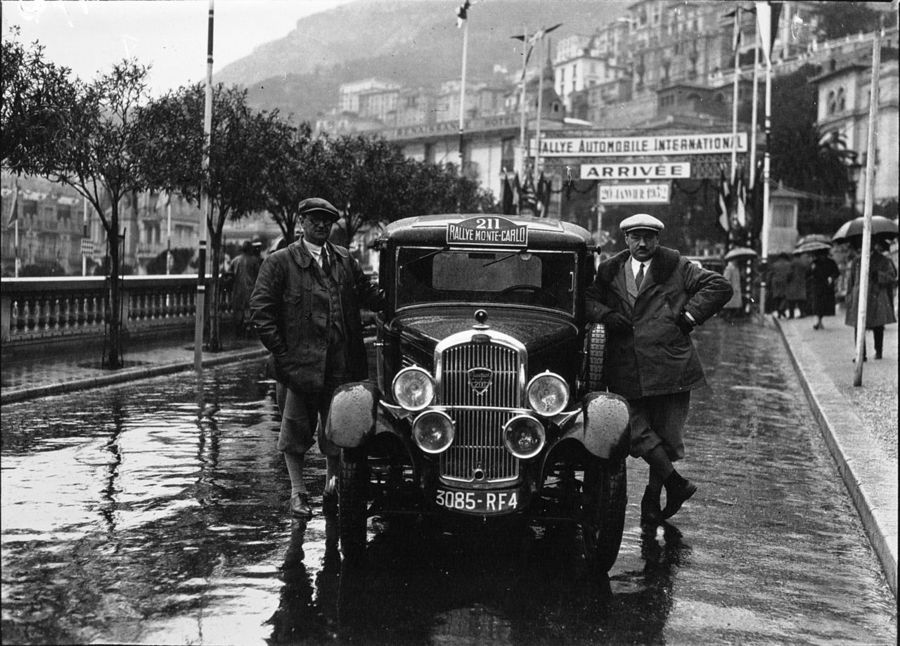
EAK magazine "Auto" 4/1934 wrote that new Auto-Union racing car constructed by Ferdinand Porsche was tested on AVUS and Nürburg-Ring. P-car (Porsche-car) had 16-cylinder mid-engine. First tests in Italy showed 252 km/h top speed. With the new P-car Hans Stuck made immediately new track record on AVUS with 217 km/h average speed and soon after that showed 245 km/h average speed. Achieved top speed was already over 300 km/h.
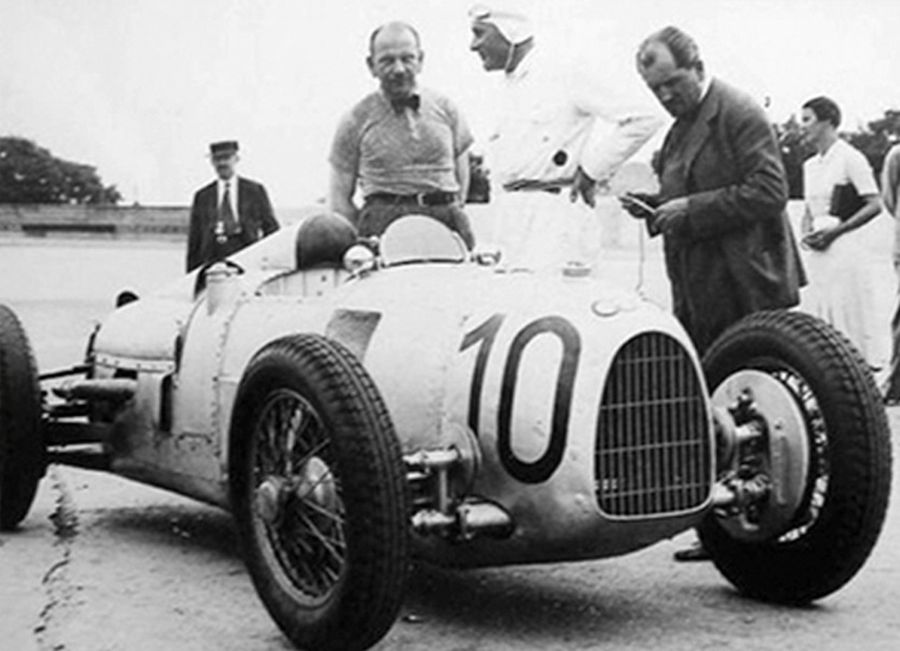
AVUS 19.5 km high speed race track was opened in 1921. AVUS stands for Automobil-Verkehrs- und Übungs-Straße (Automobile traffic and training road). The larger north-curve of AVUS. In 1959 Jean Behra was killed here when he flew over the top of the curve in his Porsche 718 RSK (www.youtube.com Behra's fatal accident at 0:18). Same had happened before to another driver, but he luckily walked away. There was no wall or fence on top of the banked curve. The banking was dismantled in 1967 and 1999 saw the last race on AVUS. The track is now part of Autobahn and the round control tower is now a hotel and restaurant.
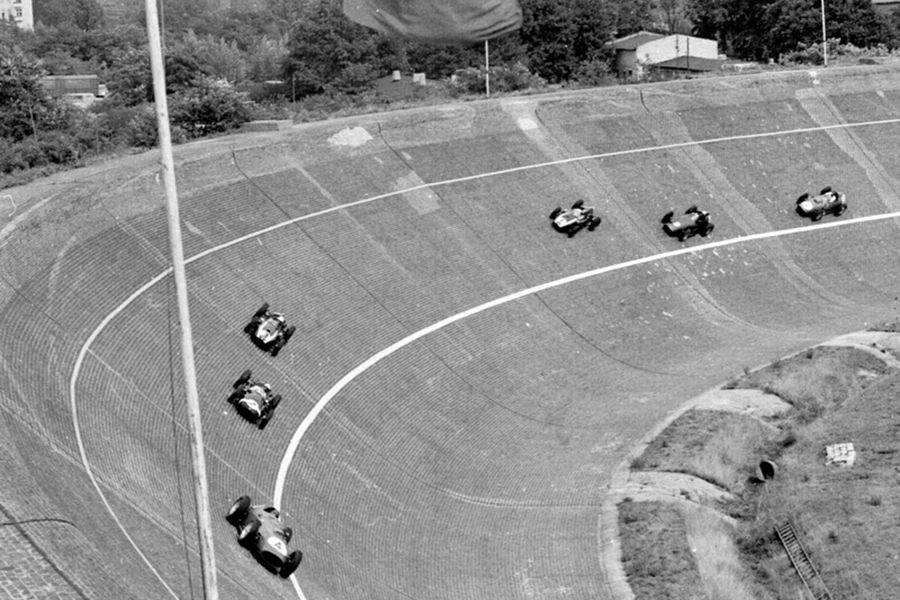
1935 Monte Carlo rallye registered 165 participants and 20 of them to start from Tallinn. 17 started from Tallinn, 102 finished in Monaco. In Estonia Julius Johanson made new Estonian record in 1 km flying start competition with the Studebaker racing car. The result was 148.8 km/h.
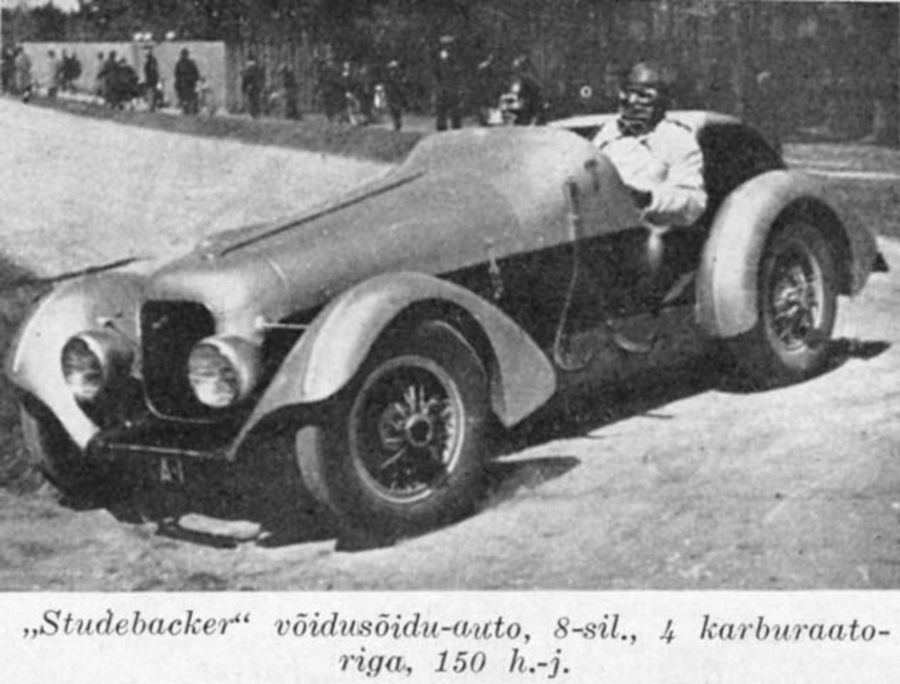
5.5L, 8 cylinders, 4 carbs, 150 hp.
In September an international race - Estonian Tourist Trophy (TT) - was organized for the 3rd time. Participants from 5 countries took part (Sweden, Finland, Estonia, Latvia, Germany). Main focus was on motorcycles as before, but some good cars raced aswell. President of Estonia, Konstantin Päts, opened the event. Winner was K.Ebb (Mercedes-Benz, 7-liter compressor), 2nd E.Elo (Bugatti), 3rd A.Vallenius (Ford), 4th A.Sorri (Chrysler), 5th A.Patama (Ford). First 5 places were taken by drivers from Finland. 6th was Estonian Julius Johanson (Studebaker racing car). In smaller engine class there were only 2 cars and Estonian "Rony Rocy" Scheel won (MG).
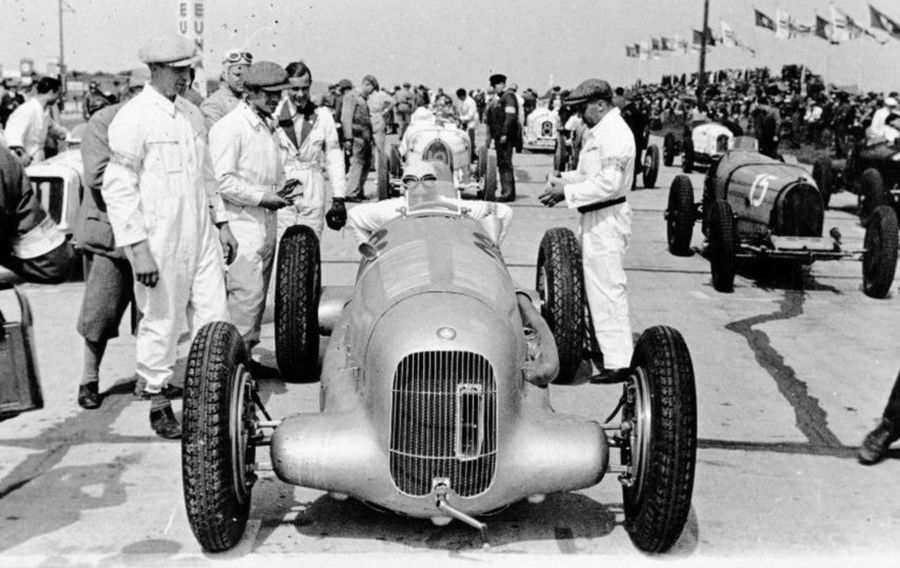
1936 Monte Carlo 15th rallye had 105 registered particiants, 92 started and 72 finished. The number of participants had decreased and the 1937 event was about to be canceled.
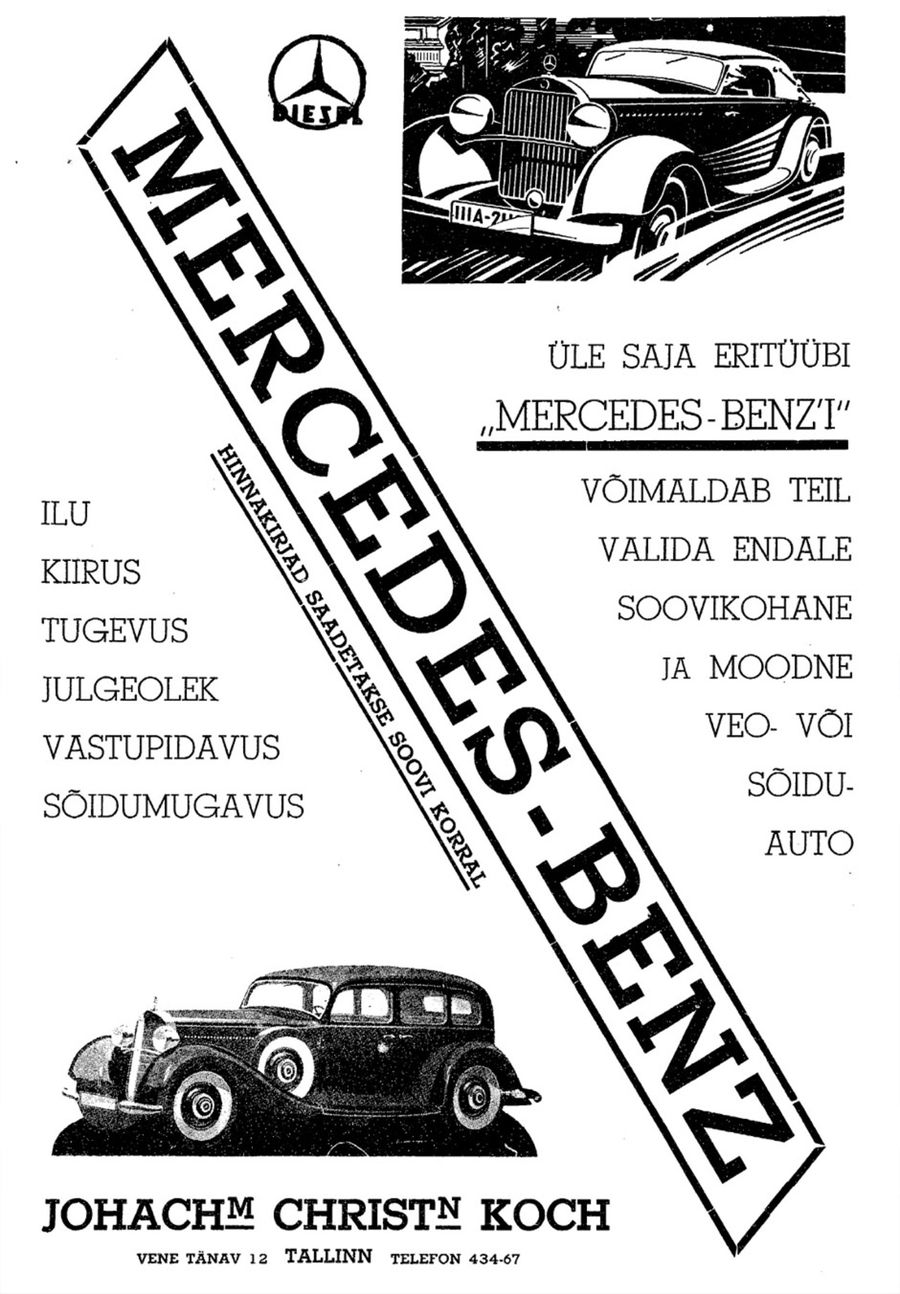
Mercedes ad in EAK "Auto" magazine. The ad says there are over 100 different Mercedes-Benz modifications available!
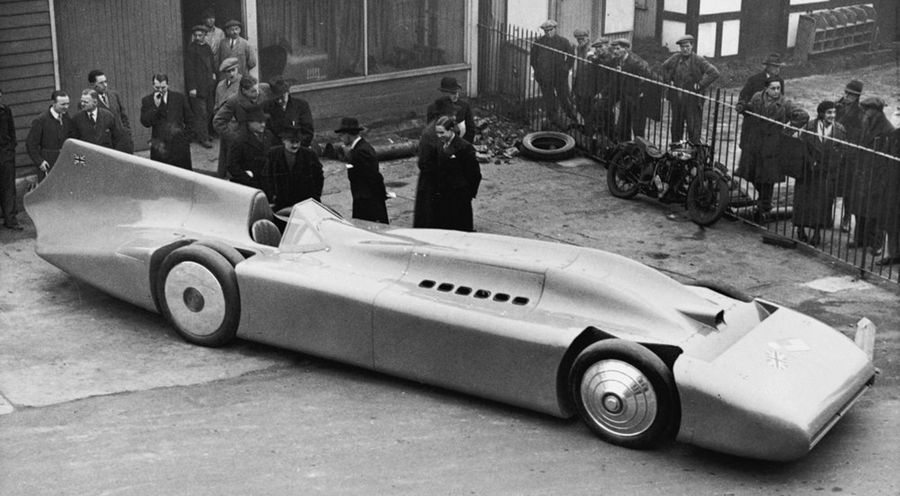
World's fastest car - Malcolm Campbell's Bluebird which drives over 400 km/h ("Auto" 1/1936)
In 1936 Estonian TT was held again for motorcycles and cars. Car race had a funny car from Finland - E.Alm's Ford had an airplane style rear end. Despite this car being the slowest, it took 3rd place as only 3 cars finished after crashes or mechanical problems. At least this "Butterfly" was a great show maker for the spectators.
World car production 1920-1936 in millions of cars. As can be seen, the car production fell dramatically from 1930. October 29, 1929 was the day when the Great Depression started with the US stock market crash ("Black Tuesday"). Economical problems quickly spread to almost every country in the world. The car production fell 3 times (from 6 million to 2 million) between 1929 and 1932.
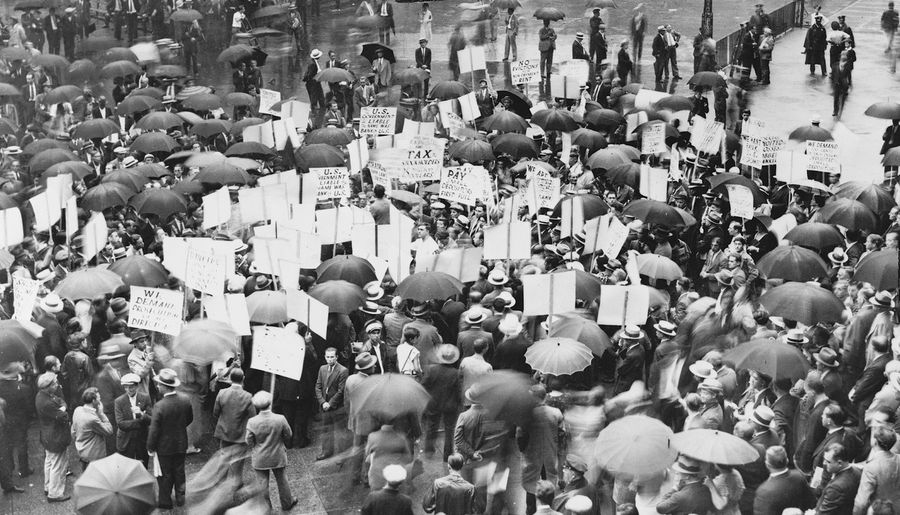
1937 Monte Carlo rallye almost never happened due to the financial reasons. Finally it was still held and 133 cars were registered. 121 started and 81 finished including Nash from Estonia with Karl Siitan and Aku Zimmerman.
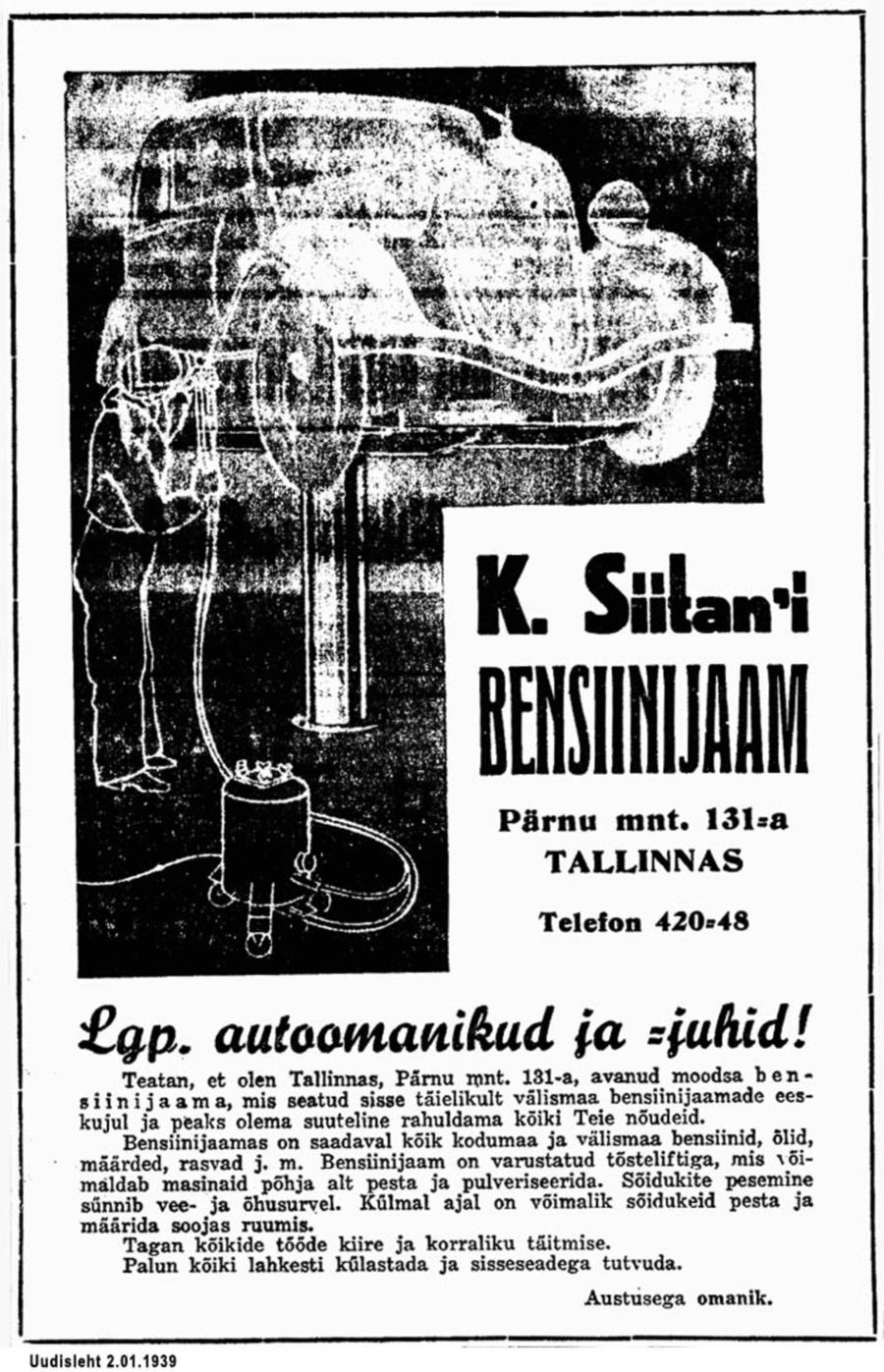
Karl Siitan advert
"Auto" magazine 3/4 1937 wrote: "People's car (Volkswagen) is a headache! Dr.Porsche, the constructor of the Auto-Union racing cars, said that it is easier to build 10 racing cars than 1 people's car."
In autumn 1937, EAK president and "Auto" magazine publisher Jaan Zimmerman made a car trip to Central Europe and to Paris, where he met Estonian car enthusiast and amateur racing driver Eduard Klimberg, who lived there. Klimberg took him to Montlhery race track near Paris, where they drove some laps around the oval track in an Amilcar racer.
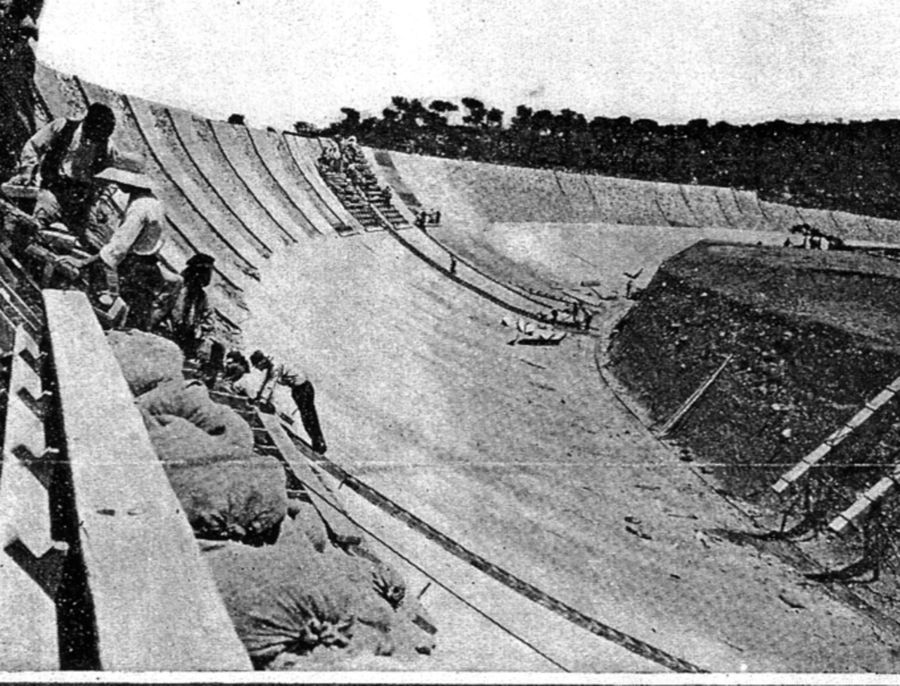
Montlhery 2.5 km oval. The track was finished in autumn 1924 and 1925 saw the first French GP, where Antonio Ascari lost his life. Loosing life in a race was quite common at these times as the cars were far from safe.
In a 1937 book by Ernest Hemingway "To Have and Have Not" he wrote "No well-run yacht basin in Southern waters is complete without at least two sunburned, salt bleached-headed Esthonians...". As Estonia is so small country, many Estonians are proud that Hemingway mentioned Estonians in his book.
1938 Monte Carlo rallye had 4 starters from Tallinn, including Estonian Karl Siitan. By the way, rallye organizers' commitee in Monaco included Estonian Eduard Klimberg! Estonians and other participants faced difficulties in Poland on the way from Warzawa to Germany. A criminal tyre repair shop owner had covered the road with nails and he appeared immediately and offered his help when a car had a flat tyre. Estonians lost 4 tyres in a 2 km part of the road. Siitan finished among the 91 cars that survived the rallye from 143 total cars.
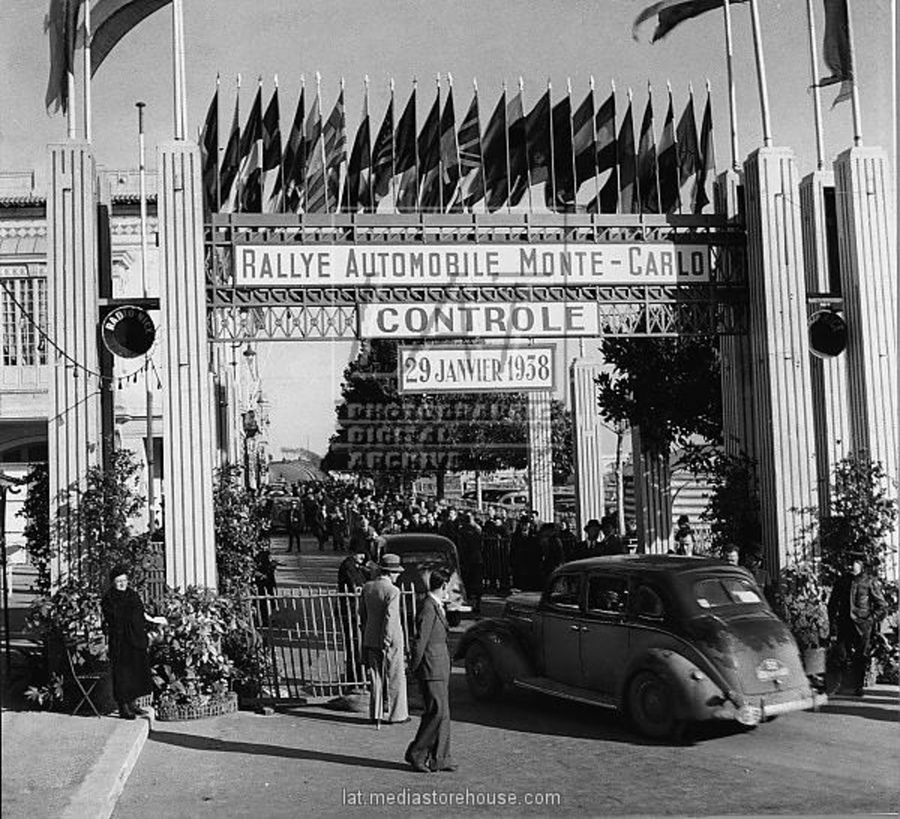
The same year a Rallye to Tripoli was held. Well known German racer Gerhard Macher started from Tallinn to Tripoli on May 3 at 00:00. Macher had been in Tallinn before because of the Monte Carlo rallye. Tripoli Rallye finish was set for May 15, on the same day with Tripoli GP. The length of Macher's trip from Estonia, Europe to Libya, Africa was 5280 km. Macher managed to win the rallye! Yes, he won it among 74 competitors!

Gerhard Macher
"Auto" magazine 5/1938 writes about the KdF-wagen. Initially called the Porsche 60 by Ferdinand Porsche, the car was officially named the KdF-Wagen by Hitler when the project was launched. Factory construction started in May 1938 and after it will be finished, 50.000 workers will be hired! "Auto" magazine speculated that KdF meant Kraftwagen des Führers - motor vehicle of the leader. It was easy to come to that conclusion as the Volkswagen was Hitler's idea and Führer was his synonym. KdF really meant Kraft durch Freude ('Strength Through Joy'). The article writes that no other car in the world has passed so many and so long tests as Dr.Porsche's people's car. Initial information says, the car will weigh only 650 kg! And it will consume 6-7 litres of fuel on 100 km. Standard color will be dark blue!? Acceleration 0-70 km/h 14 seconds was comparable to cars with large engines.
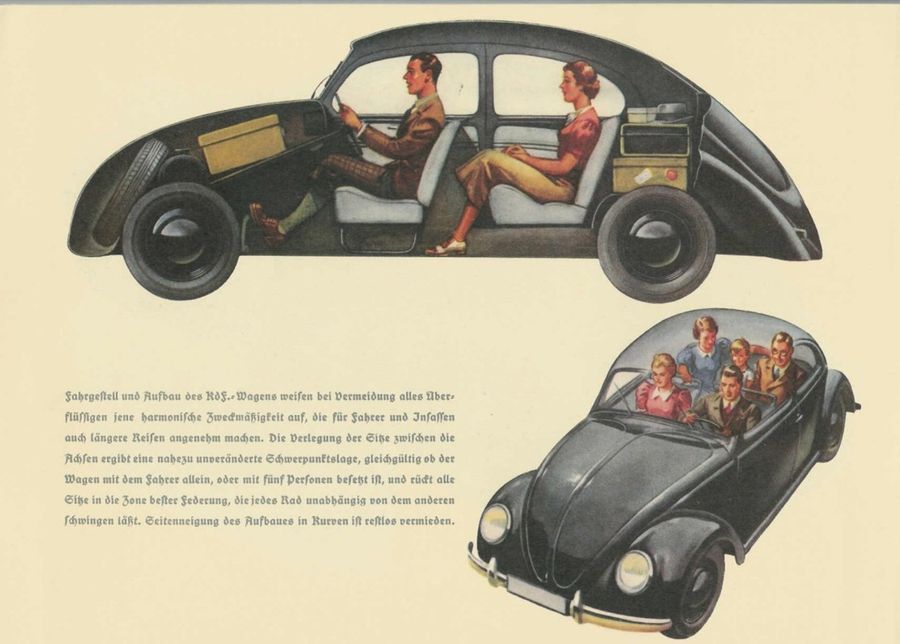
KdF-wagen was planned to be produced in 3 body forms - normal saloon, open top saloon and a full cabriolet. As we know now, World War II started exactly when the car production was scheduled to start and after the war, the volkswagen was produced only in 2 body forms, as a saloon and as a cabriolet. Only approximately 2% of the millions of VW's were produced as cabrios.
1939 Monte Carlo rallye had 121 starters and 100 finishers. 17 cars started from Tallinn. In Poland, the participants faced again the problems with the tyre repair shop owner, who tried to increase his business by seeding nails on the road. This time the crime was discovered quickly and 2 guys were arrested by Polish police.
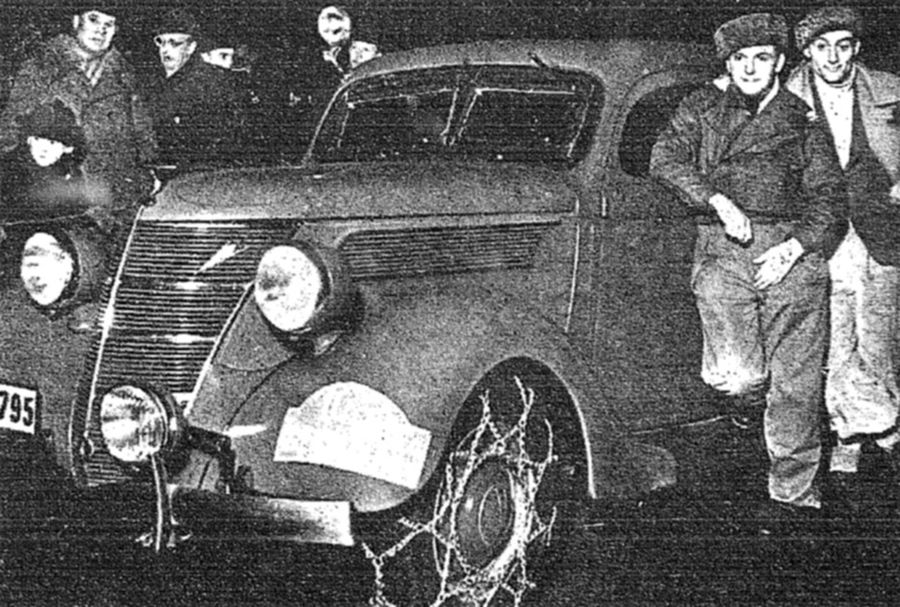
Gerhard Macher before the start. Check the snow chains!
In April 1939, Hans Günther Kolwes and Karl Gross started from Tallinn for the Tripoli rallye. The start was at 00:30 in the night. On September 1, 1939 World War II started. Everything else ended. "Auto" magazine was published until issue 3/4 (April-June). 1940. Soviet Army occupied Estonia in June 1940.
During the Soviet occupation Estonia was the "car country" among the 15 states of Soviet Union - Estonians had 4 times more cars than was the average. All that despite the fact that it was basically not possible to buy a new car during the occupation - USSR couldn't produce enough cars and as the borders were hold shut, it was not possible to import cars. In 1973 Norma factory starts to produce safety belts for car makers and is doing it still (Norma belongs to Autoliv, which is the worldwide leader in automotive safety). There might be an Estonian safety belt in your car, too!
Pre-1945 cars in Estonia today
During the soviet occupation 1944-1992, estonians were not allowed to buy cars from outside Soviet Union and were forced to drive soviet crap-cars. For the joy of historic car lovers, we still have around 250 cars registered in Estonia that have their birthdays before the soviet occupation. See the following table with the cars registered latest on 1944 and which are still in the register.









